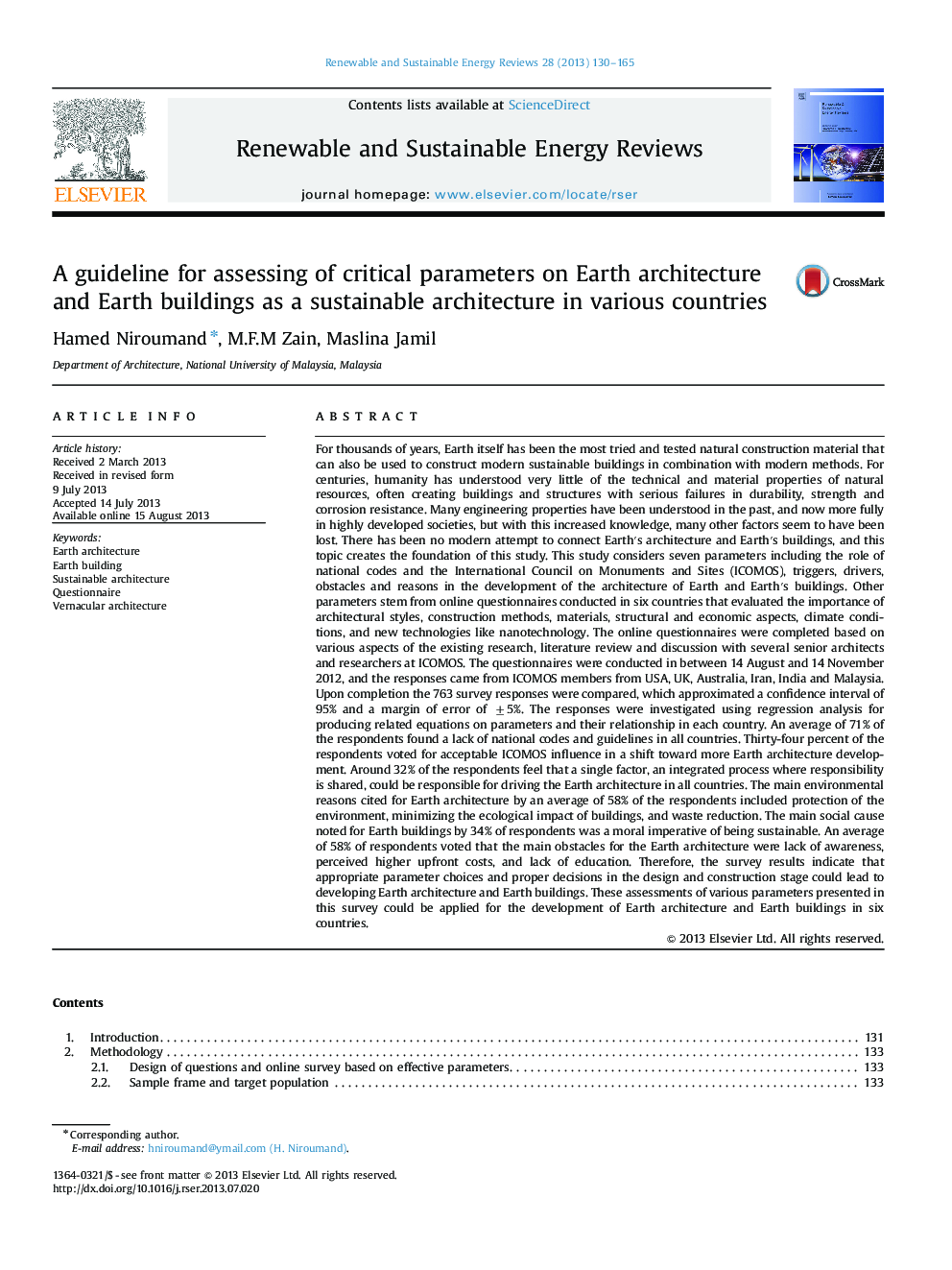| کد مقاله | کد نشریه | سال انتشار | مقاله انگلیسی | نسخه تمام متن |
|---|---|---|---|---|
| 8120897 | 1522357 | 2013 | 36 صفحه PDF | دانلود رایگان |
عنوان انگلیسی مقاله ISI
A guideline for assessing of critical parameters on Earth architecture and Earth buildings as a sustainable architecture in various countries
ترجمه فارسی عنوان
یک راهنما برای ارزیابی پارامترهای مهم در معماری زمین و ساختمان های زمین به عنوان یک معماری پایدار در کشورهای مختلف
دانلود مقاله + سفارش ترجمه
دانلود مقاله ISI انگلیسی
رایگان برای ایرانیان
کلمات کلیدی
معماری زمین، ساختمان زمین، معماری پایدار، پرسشنامه، معماری بومی
موضوعات مرتبط
مهندسی و علوم پایه
مهندسی انرژی
انرژی های تجدید پذیر، توسعه پایدار و محیط زیست
چکیده انگلیسی
For thousands of years, Earth itself has been the most tried and tested natural construction material that can also be used to construct modern sustainable buildings in combination with modern methods. For centuries, humanity has understood very little of the technical and material properties of natural resources, often creating buildings and structures with serious failures in durability, strength and corrosion resistance. Many engineering properties have been understood in the past, and now more fully in highly developed societies, but with this increased knowledge, many other factors seem to have been lost. There has been no modern attempt to connect Earthâ²s architecture and Earthâ²s buildings, and this topic creates the foundation of this study. This study considers seven parameters including the role of national codes and the International Council on Monuments and Sites (ICOMOS), triggers, drivers, obstacles and reasons in the development of the architecture of Earth and Earthâ²s buildings. Other parameters stem from online questionnaires conducted in six countries that evaluated the importance of architectural styles, construction methods, materials, structural and economic aspects, climate conditions, and new technologies like nanotechnology. The online questionnaires were completed based on various aspects of the existing research, literature review and discussion with several senior architects and researchers at ICOMOS. The questionnaires were conducted in between 14 August and 14 November 2012, and the responses came from ICOMOS members from USA, UK, Australia, Iran, India and Malaysia. Upon completion the 763 survey responses were compared, which approximated a confidence interval of 95% and a margin of error of ±5%. The responses were investigated using regression analysis for producing related equations on parameters and their relationship in each country. An average of 71% of the respondents found a lack of national codes and guidelines in all countries. Thirty-four percent of the respondents voted for acceptable ICOMOS influence in a shift toward more Earth architecture development. Around 32% of the respondents feel that a single factor, an integrated process where responsibility is shared, could be responsible for driving the Earth architecture in all countries. The main environmental reasons cited for Earth architecture by an average of 58% of the respondents included protection of the environment, minimizing the ecological impact of buildings, and waste reduction. The main social cause noted for Earth buildings by 34% of respondents was a moral imperative of being sustainable. An average of 58% of respondents voted that the main obstacles for the Earth architecture were lack of awareness, perceived higher upfront costs, and lack of education. Therefore, the survey results indicate that appropriate parameter choices and proper decisions in the design and construction stage could lead to developing Earth architecture and Earth buildings. These assessments of various parameters presented in this survey could be applied for the development of Earth architecture and Earth buildings in six countries.
ناشر
Database: Elsevier - ScienceDirect (ساینس دایرکت)
Journal: Renewable and Sustainable Energy Reviews - Volume 28, December 2013, Pages 130-165
Journal: Renewable and Sustainable Energy Reviews - Volume 28, December 2013, Pages 130-165
نویسندگان
Hamed Niroumand, M.F.M Zain, Maslina Jamil,
